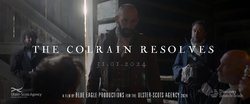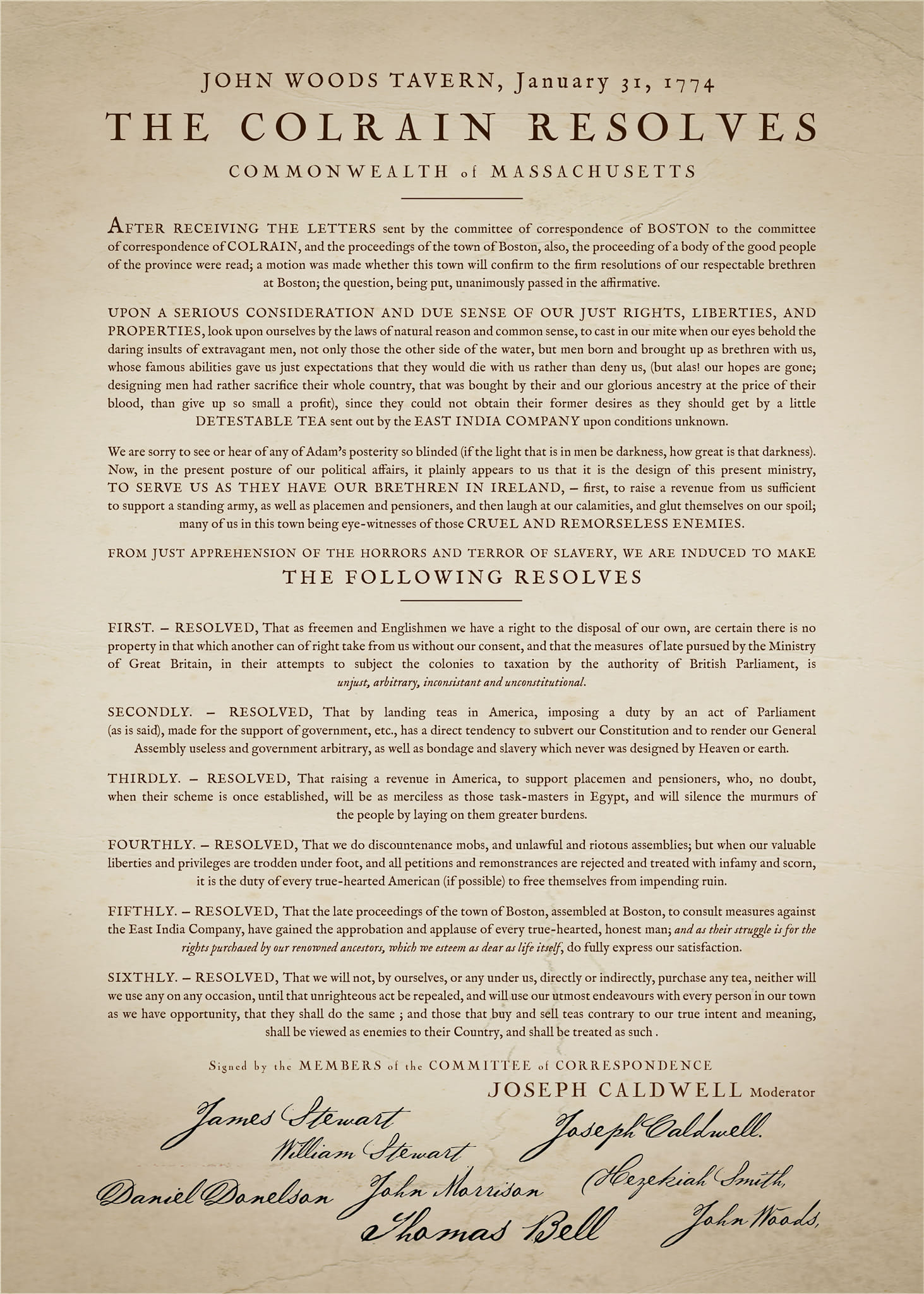"Shore" [Shore] Meaning: Beach
The Colrain Resolves

06 February 2024
On 16 December 1773, American colonists famously dumped a shipment of tea overboard and into Boston Harbour in what is now known as the Boston Tea Party. The events were in protest at London passing laws which imposed trade barriers on the American colonists and subjected them to laws over which they had no say.
In the weeks following the Boston Tea Party, the colonists of New England braced for the reaction of the government in London. Rather than wait passively for the backlash, they began to make plans for the next stage of their campaign. The inhabitants of Colrain, a Scotch-Irish settlement in Western Massachusetts, were some of the first to declare their hand.
 On 31 January 1774, the Scotch-Irish community of Colrain adopted a series of resolutions, known as the Colrain Resolves, articulating their opposition to the government in London and demanding the restoration of their rights.
On 31 January 1774, the Scotch-Irish community of Colrain adopted a series of resolutions, known as the Colrain Resolves, articulating their opposition to the government in London and demanding the restoration of their rights.
The Scotch-Irish character of the town is clear from the names of the committee members. Joseph Caldwell, James Stewart, William Stewart, John Morrison, Daniel Donelson, Thomas Bell, John Woods and Hezekiah Smith. Several of them are known to have descended from veterans of the Siege of Derry in 1688 (indeed some of their names are reminiscent of the 13 apprentices who shut the city gates in the face of King James's army). That heritage did much to inform their approach to the situation they found themselves in.
Many other Scotch-Irish communities followed their example, drafting their own mini declarations, which were key steps on the road to 4 July 1776.
To celebrate the Colrain Resolves, a film by Blue Eagle Productions for the Ulster-Scots Agency, was recently released and is available to view via our YouTube channel here.
Today, no original copy of the Colrain Resolves survives, but the text was reproduced in a book during the 19th Century which can be found here.
In celebration of the 250th anniversary of the Colrain Resolves, the Ulster-Scots Agency has recreated the document (above left), with inspiration from the Dunlap Broadside.
The Dunlap Broadside is the printed Declaration of Independence, which was signed and printed by the Ulster-Scots Charles Thomson and John Dunlap, just two years later in 1776.
To learn more about Ulster-Scots and the Declaration of Independence, click here.
To learn more about the Ulster-Scots delegation which recently headed to New England for the 250th anniversary celebrations of the Boston Tea Party, click here.

